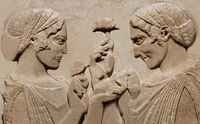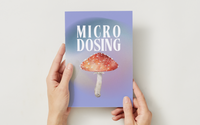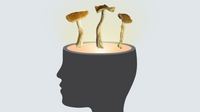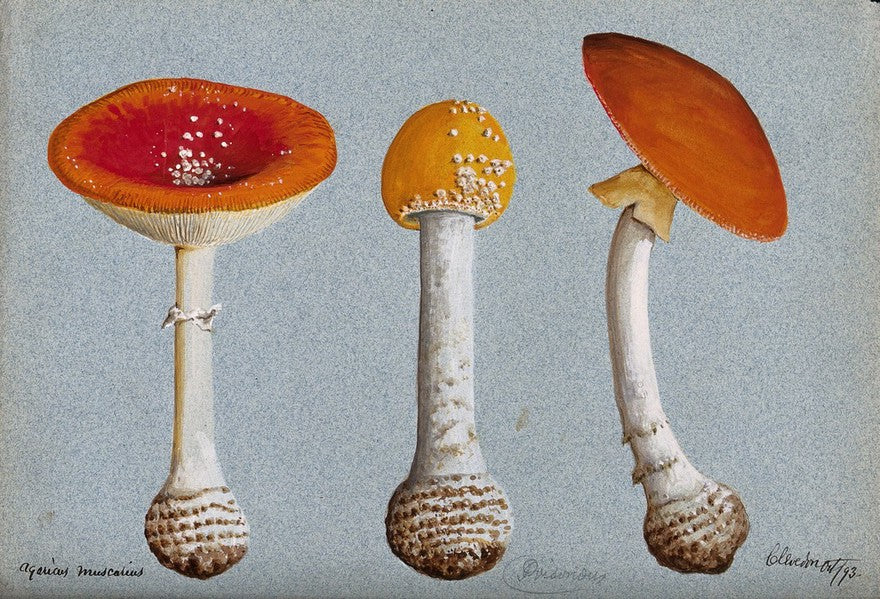Recent posts
-

-
 Amanita Muscaria Microdosing Guide: Safe Dosage, Benefits & MoreBy Psyched WellnessFebruary 17, 2025
Amanita Muscaria Microdosing Guide: Safe Dosage, Benefits & MoreBy Psyched WellnessFebruary 17, 2025 -
 Microdosing Shrooms: How Psilocybin Mushrooms Enhance Mental HealthBy Psyched WellnessJanuary 27, 2025
Microdosing Shrooms: How Psilocybin Mushrooms Enhance Mental HealthBy Psyched WellnessJanuary 27, 2025
Featured articles
The Spotty History of Amanita Muscaria

On a walk in the woods in the northern hemisphere in late summer or early fall, a hiker might come across large mushrooms with bright red caps with white spots. This is the fly agaric (Amanita muscaria) mushroom, which grows to 20 centimeters across and 30 centimeters tall. This mycorrhizal mushroom’s distinct appearance is as unique as its long and complicated history of use.
In Fly Agaric: A Compendium of History, Pharmacology, Mythology, & Exploration, cultural anthropologist Kevin Feeney, PhD, JD, wrote: “The fly agaric (Amanita muscaria) mushroom has been used for hundreds of years among tribal peoples in Siberia, as well as in parts of Scandinavia, Eastern Europe and Russia, where it has been used both topically and internally for its analgesic, anti-inflammatory, anxiolytic, and stimulant properties.”
The uses of A. muscaria, however, vary over time and location.
Tracking the traditions
In fact, many aspects of the use of A. muscaria remain mysteries. For instance, the breadth of this mushroom’s history of tribal use makes it tricky to track. “Because these are folk traditions, it is difficult to determine how far back these uses go,” Feeney explains. “There is also some confusion due to the fact that conflicting views on the mushroom exist within cultures.”
As an example, Feeney says that “many Russians consider A. muscaria to be poisonous—perhaps even deadly—but Russia is also a mycophilic culture, and this mushroom is affectionately known through fairy tales, trinkets, etcetera, in addition to being used medicinally in some parts of the country.”
The methods of using A. muscaria also vary by regions. In Russia, Feeney points out, “the Evensk and Koryak are known to use fly agaric as a poultice to treat pain and inflammation.” In Russia’s Siberian province, on the other hand, “Chuckchee women eat the dried mushroom to relieve muscle pain and soreness from long hours of tanning hides,” Feeney says.
North America
Despite the potentially thousands of years of using A. muscaria in North America, the history remains difficult to document. “In North America, there are several unsubstantiated reports of A. muscaria being used traditionally by the Ojibwe and some other North American peoples,” Feeney says. “It’s not clear what merit, if any, these reports have.”
Consequently, it remains unclear how early Native American cultures used this mushroom. As Feeney says, “There is not any notable medical use in North America that I am aware of, with the exception of individuals independently exploring the mushroom’s properties over the last several decades.” He adds, “I think this contemporary use has only recently veered into the territory of self-medication.”
Modern science has rediscovered what the ancients knew long ago—the Amanita muscaria mushroom can hold deep reservoirs of powerful medicines that can be used to help many physical and mental conditions. Psyched Wellness has invested two years exploring the research and development of products derived from this very mushroom, creating a safe proprietary extract.
From people walking across a land bridge over the Bering Strait to modern hikers in northern-hemisphere forests, A. muscaria continues its rich and intriguing history. As Feeney wrote: “Anecdotes of self-medication with this mushroom have been cropping up online in topical Facebook groups, discussion boards, blogs, and other social media platforms, with individuals claiming to treat symptoms related to Lyme Disease (fatigue, cognitive deficits), tinnitus, substance dependence/withdrawal, depression and other conditions. While these accounts are not prolific, they suggest an increased public interest in this mushroom and its potential therapeutic applications.”
Learn more about Psyched Wellness's proprietary Amanita Muscaria extract here.




